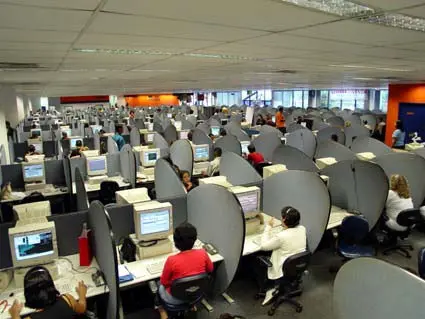The terms “answering service” and “call center” are often used interchangeably despite the distinct differences in tructures and purposes. Depending on the type of calls your business needs to manage, and the experience you want your customers to have with your company, one might be better suited than the other.
What does a Professional Answering Service Offer?
A professional answering service is a small yet complex operation where live agents answer calls for a pool of possibly a hundred different companies in specific vertical market segments. These markets include:
- Private medical offices
- Hospitals
- Clinics
- Helpdesk managers
- Property management and real estate companies
- HVAC companies
- Veterinarians
- Other businesses whose callers must speak to a human, often about more urgent or delicate situations.

For example, a man calls into an emergency veterinarian’s office because his dog ate something poisonous; a distressed mother calls into her pediatrician’s office because her child seems to be having an allergic reaction.
Due to the nature of these types of calls, professional answering services need live agents with strong personal communication skills. They need to be empathetic and able to make timely, critical decisions under pressure and in gray areas.
Furthermore, answering services do more than gather information. They function as virtual receptionists by connecting and transferring callers. They also follow emergency message delivery protocols outlined by each business they serve.
Because the operations are smaller, each professional live agent represents many accounts. Callers are often more likely to speak to the same agent if they call in multiple times in one day. This aids a business’s efforts to provide a personalized experience to each of its callers.
Call Centers
Call centers differ from answering services in three main ways:
- They are much larger operations.
- They serve horizontal markets.
- They mainly function to gather information.

As opposed to the 4 to 20 workstations in a small office that you’ll find with an answering service, call centers can have upwards of 200 workstations in a large office handling large volumes of calls. Whereas live agent for an answering service may handle phone calls for many different accounts, a representative at a call center may only handle phone calls for as many as 10 accounts in one shift.
Instead of servicing different market segments, call centers serve “horizontal” cross-sections of large companies. Their purpose is to gather information or make sales. This means they follow a very straightforward protocol that is never for emergency situations. The process is automated, fast, and involves very little decision-making – if any. To make calls fast and efficiently, telephone representatives read from a script that provides them with specific written responses.
Examples of the types of calls they receive or conduct are telemarketing, order taking for things like magazines or catalog items, and outbound calls for things like customer surveys to see if people like what they’ve ordered.
Choosing Between a Professional Answering Service and a Call Center
As you can see, there are big differences between answering services and call centers. A professional answering service will blend seamlessly with your business to provide top-notch service so customers get personal, human communication every time they call . Contact Anserve to learn more about the professional answering services our live agents provide!

Director of Business Development
With over 25 years of experience, Peter oversees the marketing, sales and account management for Anserve. He is an expert in customer service and strategic business growth, leveraging his knowledge to help businesses optimize revenue using efficient procedures.

